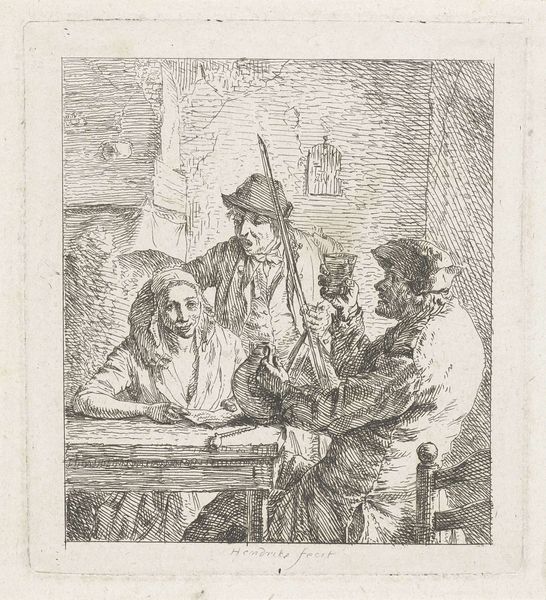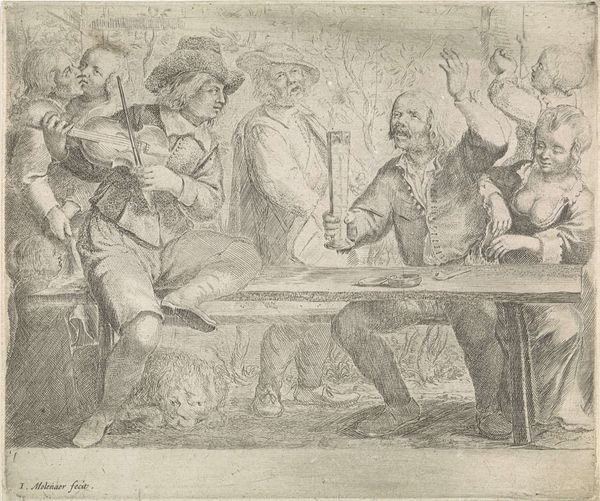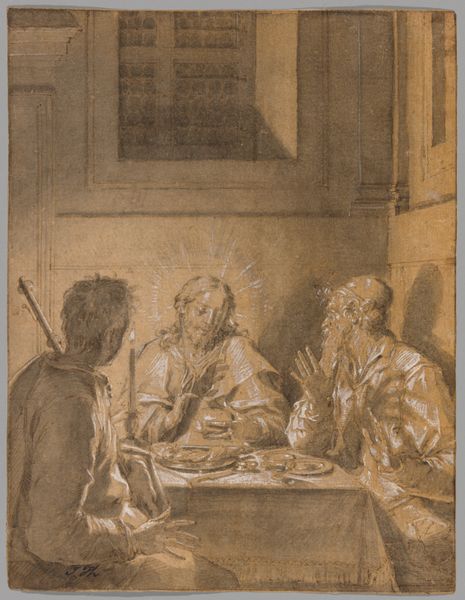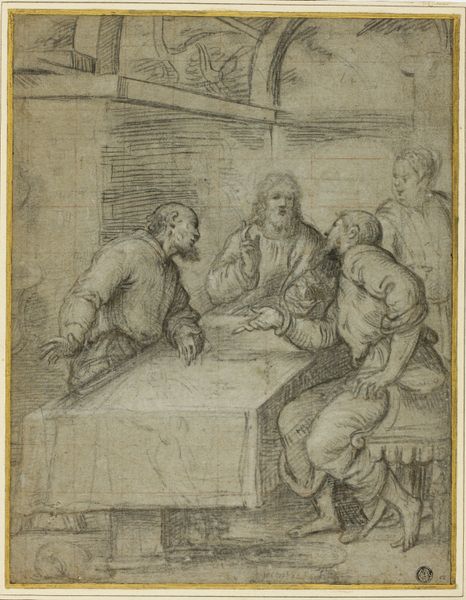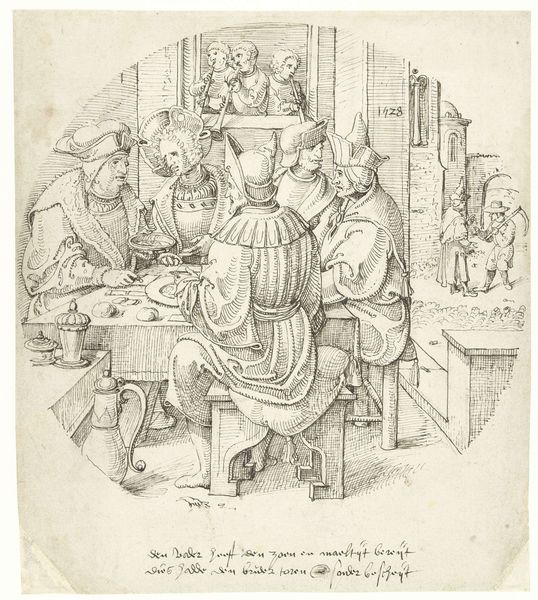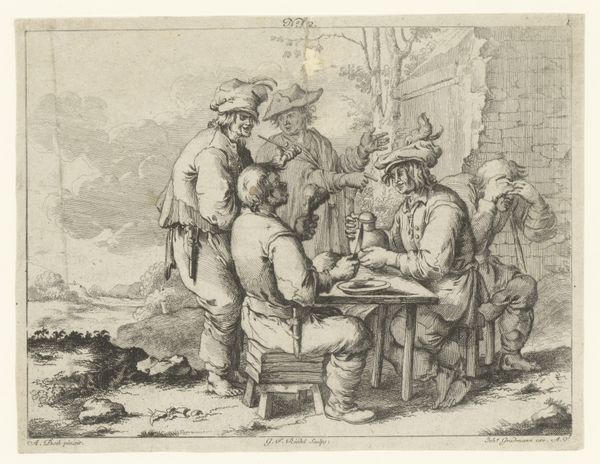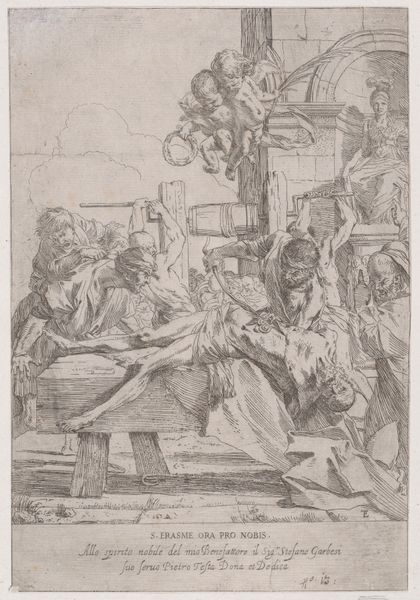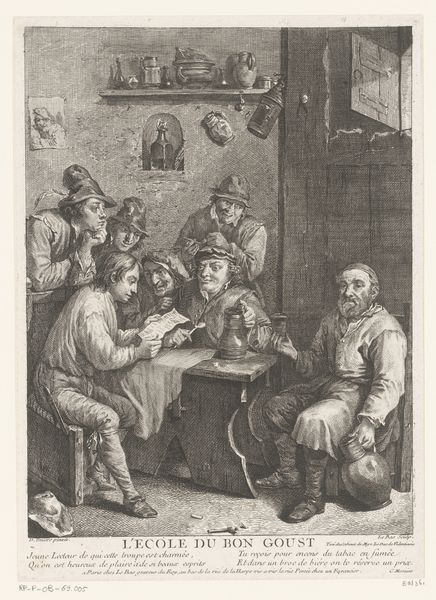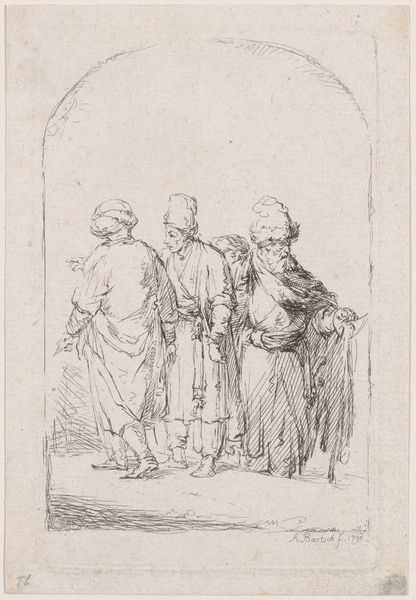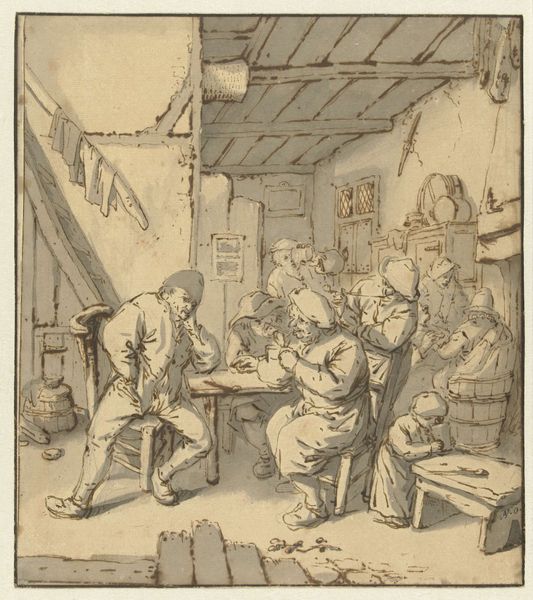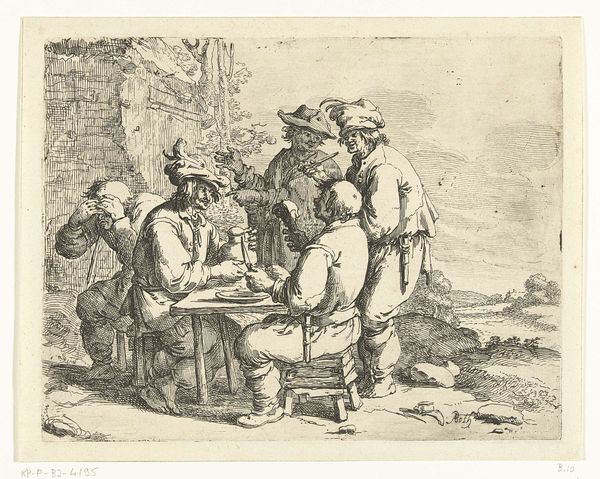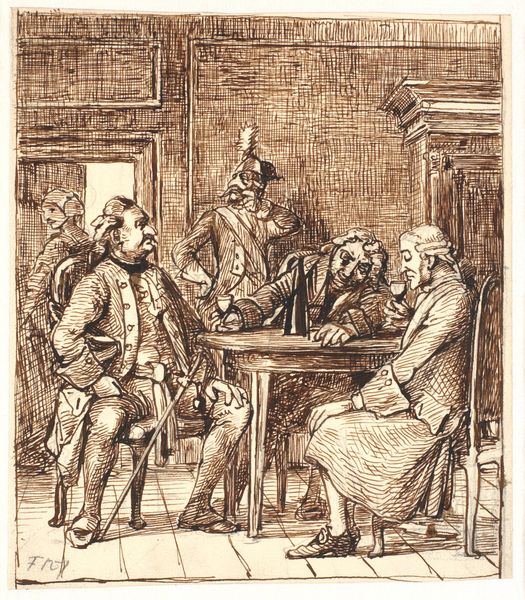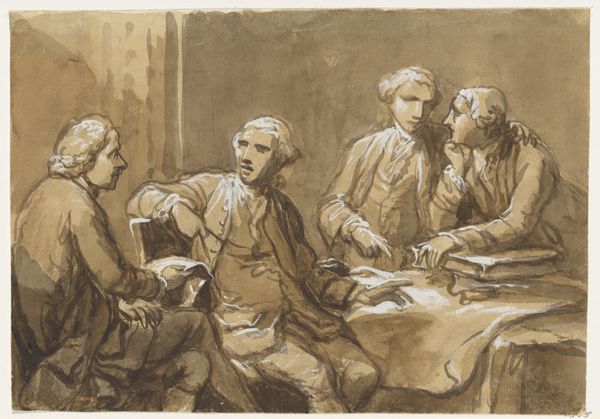
drawing, print, pencil
#
portrait
#
drawing
# print
#
pencil
#
15_18th-century
#
genre-painting
#
academic-art
Dimensions: 15 9/16 x 11 15/16 in. (39.5 x 30.3 cm)
Copyright: Public Domain
Editor: This is "Three Men at a Table," a pencil drawing by Etienne Jeaurat, created around 1763. It feels like a quick sketch, capturing a fleeting moment. I’m curious about the artist's intentions. What catches your eye in this piece? Curator: Well, I immediately consider the materials. It’s a drawing, yes, but what kind of paper? The weave, its source, how that impacted the price of the artwork and who could afford it. Did Jeaurat use commercially produced pencils? That says something about distribution and the emerging art market. And look at how the chair is rendered versus the men’s clothing. Different pressures, erasures, blendings, these were conscious choices in representing social status. Editor: So, you're saying the very materials speak to the economic realities of the time? How do they contrast, say, with the more finished paintings we see from the same era? Curator: Exactly. Paintings used more costly materials, demanding a different patron class. Drawings allowed an intimacy, both in the artist’s making and the viewer’s experiencing. Note that Jeaurat focused on everyday life here. Genre scenes such as these gained traction with a growing middle class keen to see their lives represented, and affordable reproductions enabled greater dissemination. It’s not just aesthetics; it’s about access and changing consumption patterns. The *means* of creating art were democratizing, just a bit. Editor: That's a totally new perspective for me. It's not just the subject matter, but how accessible the *making* of the art was becoming. Curator: Precisely. It highlights how artistic production is entangled with broader societal shifts in labor and economic exchange. Now, tell me, considering all this, does this drawing evoke that “fleeting moment” you initially sensed in a new light? Editor: Absolutely! I see now a much richer story woven into those pencil strokes, reflecting class, access, and consumption of art. Curator: Good. Art is never made in a vacuum.
Comments
No comments
Be the first to comment and join the conversation on the ultimate creative platform.
